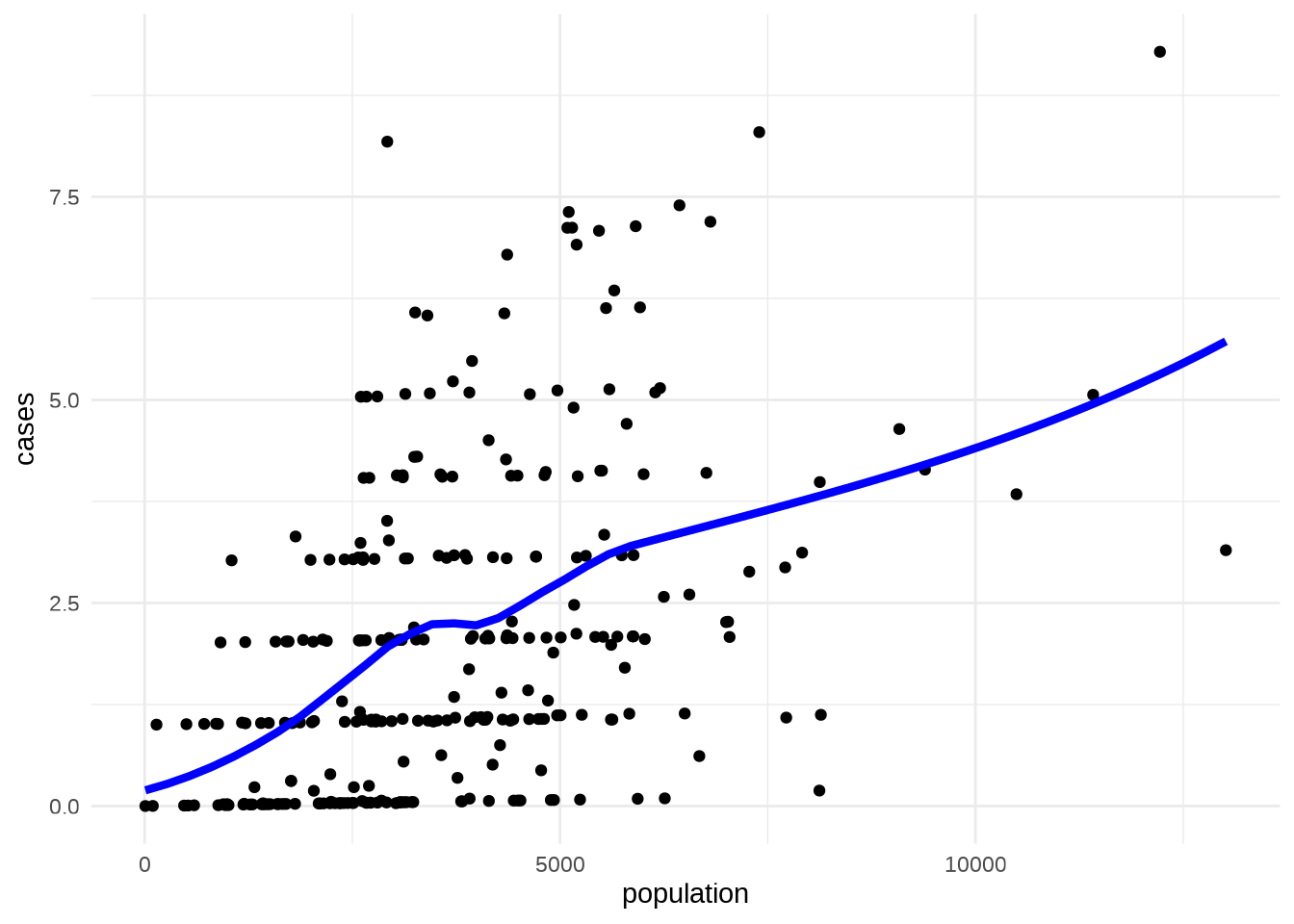13.2 Data
The layers of your plot can be populated with different datasets.
Here we generate two new datasets from the df dataset.
What geom_smooth() does behind the scenes?
- fit a model, in this case a loess model
- generate prediction, about the trend of the data
In this example we create a grid of length of 50 to have an average trend to show in a secondary layer of the plot.
## # A tibble: 3 × 2
## population cases
## <dbl> <dbl>
## 1 9 0.194
## 2 274. 0.273
## 3 540. 0.369## [1] 50 2## [1] 281 5Next step would be to isolate the outliers (observations far away from predicted values), with the help of the resid() function to extract model residuals
## Call:
## loess(formula = cases ~ population, data = df)
##
## Number of Observations: 281
## Equivalent Number of Parameters: 5.33
## Residual Standard Error: 1.769
## Trace of smoother matrix: 5.84 (exact)
##
## Control settings:
## span : 0.75
## degree : 2
## family : gaussian
## surface : interpolate cell = 0.2
## normalize: TRUE
## parametric: FALSE
## drop.square: FALSEAnd build the residuals std error vector:
## censustract.FIPS cases population x y
## 1 36007012500 7.13834 5911 -75.69563 42.06164
## 2 36007013000 7.11907 5088 -76.00001 42.12407
## 3 36007013302 0.19008 8122 -76.06948 42.13547## [1] 16 5Add a new layer with different data: grid


